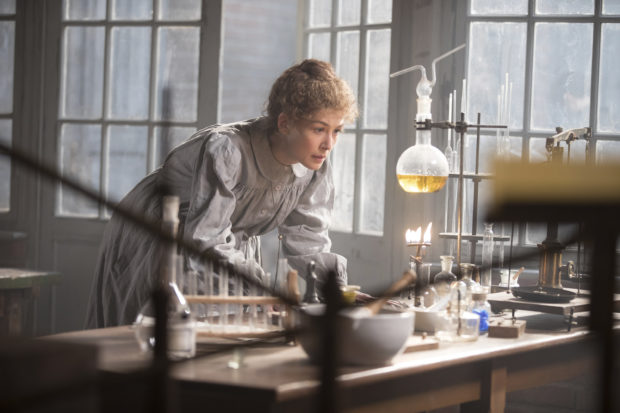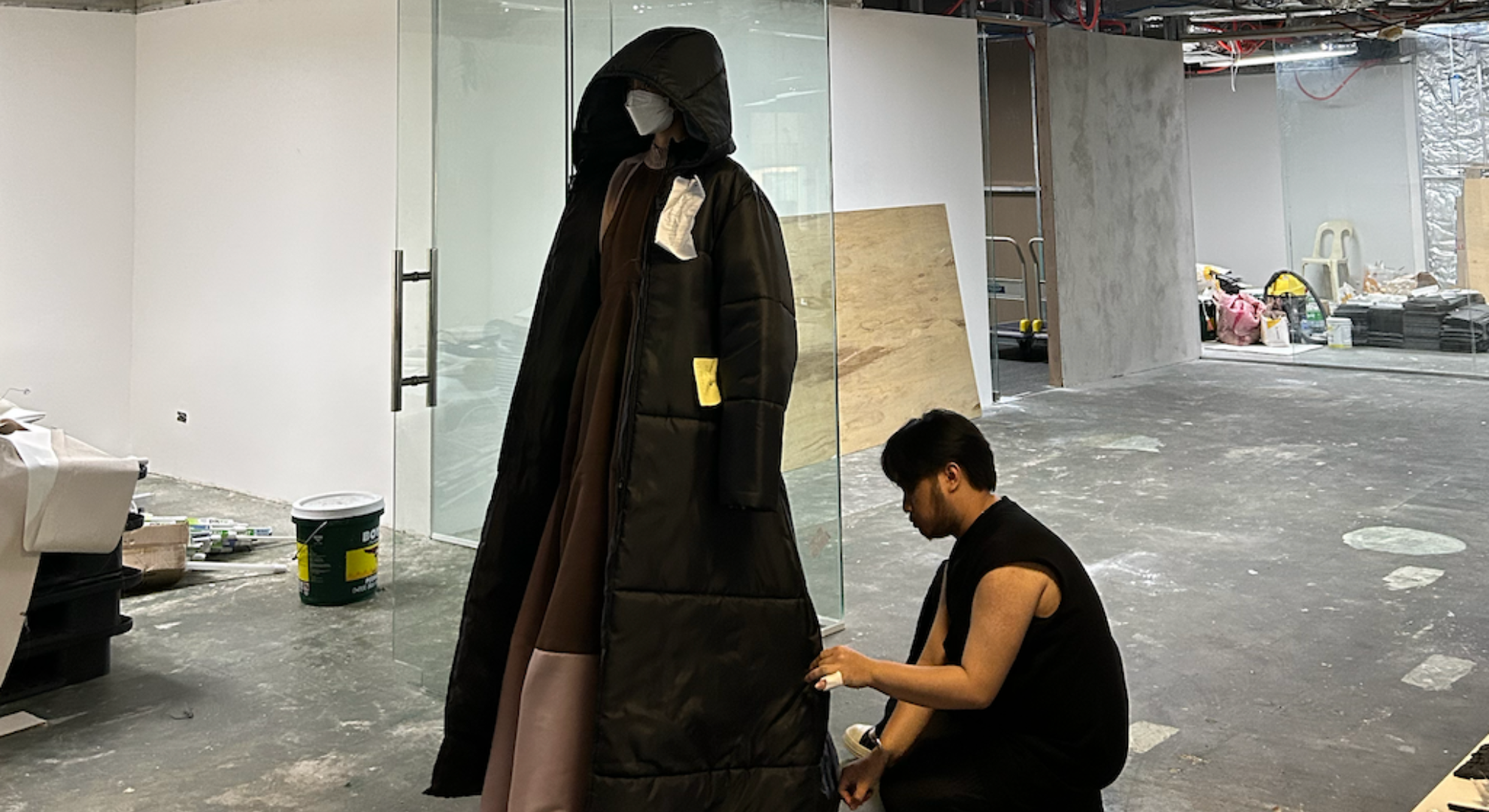It was dirty work, Marie and Pierre Curie’s discovery of radium and polonium. To investigate uranium at their Paris laboratory, Marie acquired several tons of pitchblende, a black ore, and the industrial waste product left over when uranium was removed from it. They ground the rock and dissolved it in acid to separate the elements and, in the process, discovered polonium and radium. They were working, up to their elbows, in poisonous radioactive materials.
“Radioactive,” Marjane Satrapi’s biopic of the renowned Polish-born French physicist, is alive to the toil of science. Not just its grubby, physical labor, but the burden of a sexist, male-dominated field, the hardships of a public life and the unrelenting tenacity of a pioneer like Curie. As played by Rosamund Pike, Curie is as tough, prickly and potent as that pitchblende.
The film, which debuts Friday on Amazon Prime, comes from Lauren Redniss’ 2010 graphic biography, “Radioactive: Marie & Pierre Curie: A Tale of Love and Fallout.” Satrapi, the Iranian-French filmmaker, has her own roots in graphic novels. She co-directed the adaptation of her own “Persepolis,” a striking coming-of-age tale set against the Islamic Revolution.

“Persepolis” had a compelling monochrome look, and Redniss’ book a more surreal, iridescent style. But “Radioactive” is bathed in the more conventional gauzy glow of a biopic, and clings disappointingly to the genre’s familiar rhythms. With some notable exceptions, this is a traditional treatment of an extraordinary life, complete with deathbed scenes that bookend the film and frequent lines, in Jack Thorne’s screenplay, in which Curie single-mindedly speaks of scientific progress less like a person than a grade-school teaching tool.
Maybe there’s not anything so wrong with that. Female scientists are so frequently underappreciated that “Radioactive” is worthwhile. Curie hasn’t been absent from screens. There was, most recently, the 2017 international production “Marie Curie: The Courage of Knowledge” and the 1997 French drama “Les Palmes de M. Schutz,” with Isabelle Huppert as Curie. But not since 1943′s Oscar-nominated “Madame Curie” has she had the full biopic treatment. As the first person to win the Nobel Prize twice — after which she saved countless lives with mobile X-ray labs during World War I — she had the sort of huge life that more than fills a movie.
And “Radioactive” has endeavored to capture a full picture of Curie, starting with her romance with Pierre (Sam Riley). Having suffered the misogyny of colleagues and recently been turned out of her office, she’s skeptical of him both professionally and romantically. But he proves an equitable partner and, besides, has something special to offer: laboratory space.
Their relationship and their historical discoveries make up about half of “Radioactive,” and while it may be the most dramatic period of Curie’s life, it’s the more inert piece of the film. History is sometimes exaggerated for effect. Marie quarrels with Pierre when he accepts their Nobel without her; he, in fact, refused to until they both could travel to Sweden, which they did two years later. Marie is also shown here as an outsider throughout, which minimizes her role in the scientific community.
But “Radioactive” picks up after the death of Pierre in a road accident in 1906. There is scandal; Curie years later came to love Pierre’s protege, a physics professor named Paul Langevin (Aneurin Barnard), who was married but separated. The French branded her a homewrecker and cursed as an immigrant. (Albert Einstein supported her in a memorable letter.) Later, wartime scenes with her 17-year-old daughter Irène (the talented Anya Taylor-Joy) reverberate with electricity missing from much of the film.
In its boldest break from the biopic format, “Radioactive” also weaves in flashes of the modern ramifications to Curie’s discoveries: a boy, in 1957, receiving radiation treatment; the bombing of Hiroshima; meltdown at Chernobyl. The leaps ahead — which come from Redniss’ graphic novel — are disjointed and unexamined. But they give the often too rigid and unimaginative “Radioactive” a charge, putting Curie into a broader, never-ending context.
In one them, we’re plunged into a Nevada atomic test. There’s a mock town, complete with a stereotypical “nuclear” family including a housewife. We watch as the bomb, a product partly of Curie’s discoveries decades earlier, eviscerates them.
“Radioactive,” an Amazon. release, is rated PG-13 by the Motion Picture Association of America for thematic elements, disturbing images, brief nudity and a scene of sensuality. Running time: 109 minutes. Two and a half stars out of four.













































